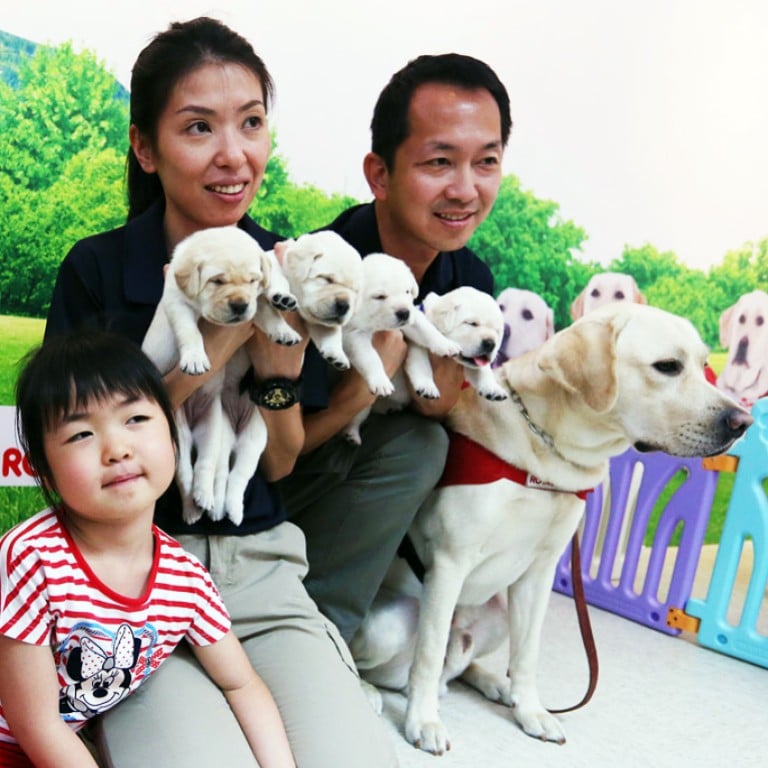
First Hong Kong-born guide dogs set to help meet huge demand from the visually impaired
With an increasing number of visually impaired people waiting for guide dogs, the city finally has its first locally born canines – four female Labrador puppies.
Guide dog trainers say this is only the first step towards the localisation of seeing eye dogs. They hope the government can provide more support for trainers and breeders so those in need – currently around 1,700 out of 170,000 visually impaired people – can benefit from the service as soon as possible.
There are only about 30 guide dogs in Hong Kong at the moment – all from overseas. They come mainly from Japan, Taiwan, the UK and the United States.
The four puppies, born on March 21, still do not have names. The Hong Kong Seeing Eye Dog Services, the centre that owns the canines, said charitable companies or individuals were welcome to donate a minimum of HK$50,000 to name the puppies, but the names should all start with the letter “H”, meaning they are rooted in Hong Kong.
Naming rights will go to the four companies or individuals offering the biggest donations.
So far, the centre is using four ribbons – red, blue, yellow and purple – to identify the puppies. Staff members for the time being call them by the colour of their ribbons.
“It is important that we have our own guide dogs,” said centre chairman Raymond Cheung Wai-man. “Hong Kong’s environment, traffic and public facilities are very different from those in other places, so local dogs can provide better help to the visually impaired.”

The centre is one of two guide dog service providers in Hong Kong. In addition to the newborns, the centre has 13 guide dogs, including 12 Labradors and one which is a mix of Labrador and Golden Retriever.
Edith Lee Yuen-yan, whose family has been hosting guide dog Yoyo for two years and is now temporarily taking in the four puppies, said taking care of them was like taking care of human babies, as they barked whenever they felt hungry and they would wake up from time to time throughout the night, barking for more milk.
“I haven’t had a night when I could have a good sleep,” she said. “But it’s been fun and my daughters also learned a lot when taking care of them.”
As each host family can only accommodate one guide dog, the centre has found four families to take further care of each of the puppies. Cheung said they would stay with Yoyo for about eight weeks, during which time their immune systems would be strengthened. They would then be sent to the four families.
He said generally when potential guide dogs were one year old, they would be assessed to decide if they would be kept for breeding or be neutered for guide training, which would include getting them to follow orders at home, avoid obstacles and find outside destinations.
It would normally take two years – from birth to the completion of training – before guide dogs were proficient. The process would normally cost about HK$200,000, Cheung said.
He called on the government to provide more resources and allow public housing tenants to host dogs, so the service could develop faster in Hong Kong. Otherwise, said Cheung, it might take half a century for the city to meet demand for seeing eye dogs.

